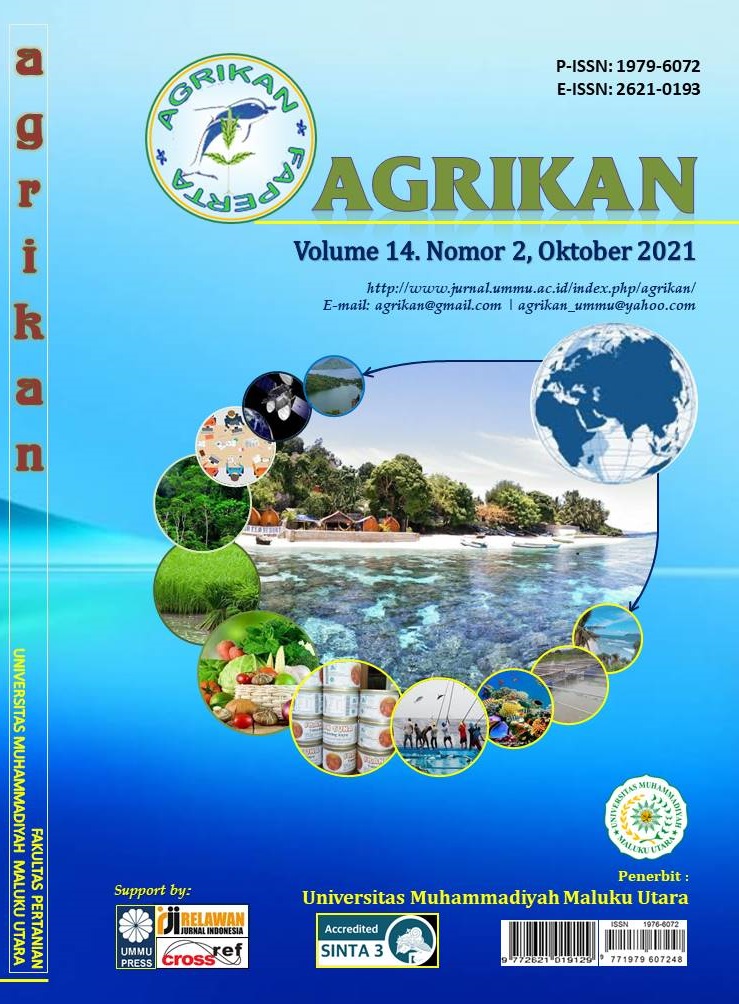Exploration of Bioactive Compounds, Toxicity and Activity of Sea Cucumber Stichopus horrens in Tagalaya and Tolonuo Villages, North Halmahera
DOI:
https://doi.org/10.52046/agrikan.v14i2.866Keywords:
Teripang kering, Tobelo, senyawa bioaktif, Stichopus horrens, toksisitasAbstract
Sea cucumbers are marine invertebrates that have a high selling value and are even traded on the international market. Tagalaya and Tolonuo villages are villages in North Halmahera that have sea cucumber fishermen, and sell their processed sea cucumbers in dry form. This study aims to identify bioactive compounds, toxicity and antioxidant activity of sea cucumber extract Stichopus horrens obtained from Tagalaya Village and Tolonuo Village, North Halmahera. The results of the analysis showed that the highest yield of the extraction process was sea cucumber B which was 16.93%, the LC50 value ranged from 332.16 to 368.54 ppm which was included in the toxic category. The biochemical compounds found in both sea cucumber extracts are saponins. Sea cucumber extract showed no antioxidant activity
Downloads
Published
Issue
Section
License
Copyright (c) 2021 Febrina Olivia Akerina, Kadek Intan Dwi Anggari

This work is licensed under a Creative Commons Attribution 4.0 International License.

This work is licensed under a Creative Commons Attribution 4.0 International License.













